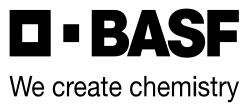Cimegra
Group 30
Powered by the unique IRAC Group 30 mode of action, Cimegra® insecticide is an innovative foliar insecticide for listed vegetable crops1, including potatoes, that provides control of prevalent and difficult-to-control chewing insects
- Unique mode of action that works through contact and ingestion
- Delivers fast knockdown and control growers can count on
- Effective resistance management tool when used in rotation with other insecticide groups
1 Maximum residue limits (MRLs) have not yet been established in key export markets, including the USA, to support foliar application to brassica head and stem, leafy, fruiting and leaf petiole vegetables.
Labels & SDS
Benefits of Cimegra
- Powered by the unique IRAC Group 30 mode of action.
- Quickly eliminates wireworms through both contact and ingestion which leads to reduced resident populations.
- Now registered for foliar use on Colorado potato beetles.
- Convenience of simplified handling and flexibility to be tank mixed with necessary insecticides and fungicides.
- Effective resistance management tool when used in rotation with other insecticide groups.
Product Info & Application Guide
How Much to Apply
| Brassica head and stem vegetables1,2 | Cabbage looper, diamondback moth, flea beetles, imported cabbageworm | 50.6 ml/ac (125 ml/ha) |
|---|---|---|
| Fruiting vegetables1,2 | Colorado potato beetle | 50.6 to 75 ml/ac (125 to 187.5 ml/ha) |
| Tobacco hornworm, tomato hornworm | 50.6 ml/ac (125 ml/ha) | |
| Leaf petioles1,2 and leafy vegetables | Cabbage looper, diamondback moth, flea beetle, imported cabbageworm, red-headed flea beetle | 50.6 ml/ac (125 ml/ha) |
| Potatoes3 | Wireworm4 | 100 ml/ac (250 ml/ha) |
| For 90 cm (36”) row spacing5 | 2.3 ml per 100 metres of row | |
| Colorado potato beetle | 50.6 to 75 ml/ac (125 to 187.5 ml/ha) | |
| Sweet potatoes6 | Wireworm4 | 100 ml/ac (250 ml/ha) |
1 Maximum residue limits (MRLs) have not yet been established in key export markets, including the USA, to support foliar application to brassica head and stem, leafy, fruiting and leaf petiole vegetables.
2 Toxic to bees. DO NOT apply during the crop blooming period.
3 Toxic to bees. Avoid application during the crop blooming period. If applications must be made during the crop blooming period, restrict applications to evening when most bees are not foraging. When using managed bees for pollination services, DO NOT apply during the crop blooming period.
4 Do not exceed 100 ml/ac (250 ml/ha).
5 For different row spacing, see label for calculation.
6 Refer to product label for specific information on sweet potato application.
Water volume
For in-furrow use, dilute Cimegra insecticide product in a minimum of 50 L of water per hectare (20 L of water per acre). Use sufficient water to ensure thorough coverage of the seed, or seed piece and surrounding seed furrow.
For foliar use, ensure thorough coverage of the entire plant.
Mixing order
- Ensure the spray tank is clean before use.
- Fill the spray tank 1/2 full of water and start agitation.
- Shake/agitate container well before use.
- Add the required amount of Cimegra insecticide to the mix tank.
- Continue agitation while filling the remainder of the spray tank.
- After use, clean the spray tank according to label precautions.
Tank Mixes
Cimegra is not compatible with in-furrow fertilizers.
Contact AgSolutions® Customer Care or your BASF Sales Representative for more information.
Follow Crops
Immediate plant-back is permitted for all labelled crops. A plant-back interval of 30 days is required for all crops not on the label.
Resistance Management Recommendations
- Insecticide use should be based on an IPM program that includes scouting and record keeping, and considers pest thresholds, as well as cultural, biological, and other chemical control practices
- Before using an insecticide, correctly identify the pest and monitor population levels in the crop. Only treat if action thresholds (i.e., pest numbers or damage level) are met or if forecasting models expect them to be met
- Where possible, rotate the use of insecticides with different insecticide groups that control the same pests
- DO NOT exceed the total number of applications of insecticide per year
- Use tank mixtures with insecticides from a different group that are effective on the target pest when such use is permitted
- Monitor treated pest populations for resistance development
- If you suspect resistance, contact BASF or your local extension specialist
- For more information on insecticide resistance best management practices, visit https://manageresistancenow.ca/insects/



